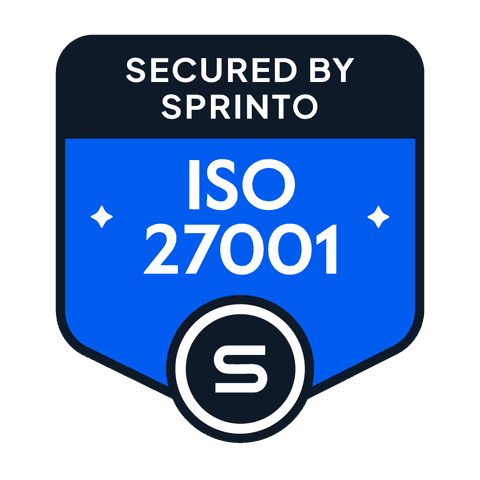08.07.2024
·
Daniel Lawson
Supply chain emissions are typically the largest emissions category for businesses. They are also among the most complex to measure accurately. Given their climate impact and significant influence on brand reputation and regulatory compliance, it is essential or organisations to adopt the right measurement methods from the start.
What are supply chain emissions?
Supply chain emissions make up the largest category for nearly every type of business. These emissions result from a business's procurement of goods and services. According to the Greenhouse Gas Protocol, they fall under Scope 3, category 1, which includes "all upstream (i.e., cradle to gate) emissions from the production of products purchased or acquired by the reporting company."
Explore our guide to emission scopes for more details on these categories.
Why measure them?
Procurement has become part of a business's brand identity and value proposition, including any supply chain impacts.
Consumers and businesses do not differentiate between legal ownership and brand ownership: if a clothing brand hires a supplier with environmental, social, or human rights issues, consumers will hold the brand accountable. Similarly, a sustainable business will take responsibility for the successes of its procurement strategies, which extends to its suppliers' successes.
Regulators share this viewpoint, exemplified by the EU's CBAM, which assigns a fair price to carbon emissions from goods produced outside the EU. Investors also reflect this through the growth of climate-related funds and SFDR regulation.
In summary, not measuring supply chain emissions can harm brand reputation. Additionally, there are regulatory and financial risks due to investor sentiment and changes in capital allocation.
Measuring, managing, and reporting supply chain emissions is essential for engaging with today's markets, with measurement often being the starting point.
Tips for calculating your supply chain emissions
1. Prioritize practicality
When measuring supply chain emissions, prioritize practicality and focus on the most significant areas. Each year, aim to improve data collection and quality: this is more valuable than striving for absolute precision from the outset.
According to the GHG Protocol, “Data should be sufficiently precise to enable intended users to make decisions with reasonable assurance that the reported information is credible”. Companies should make a sincere effort to provide a complete, accurate, and consistent account of their GHG emissions.
Transparently document and justify any gaps in estimating emissions to ensure reliability in reported data and pave the way for enhanced accuracy over time. The objective is to develop a credible and continuously improving emissions inventory rather than pursuing exhaustive and potentially overwhelming reporting.
2. Adopt a step-by-step approach to improve over time
There are several methods available for measuring supply chain emissions, each with its own benefits and challenges. Initially, companies often begin with spend-based approaches such as Environmentally Extended Input-Output (EIO) analysis. This method uses economic data to estimate emissions based on expenditure on various goods and services. While straightforward to implement, EIO analysis may not accurately capture specific supplier practices. Nonetheless, it offers significant potential in terms of coverage and identifying critical areas for improvement in the supply chain.
Another advanced method is Life Cycle Assessment (LCA), which evaluates the environmental impacts throughout a product's entire life cycle. This thorough approach provides detailed insights but can be resource-intensive and complex.
As companies progress, they can adopt more precise methods like obtaining emissions data directly from suppliers. This supplier-based disclosure approach offers a clearer and more accurate view of supply chain emissions but necessitates robust supplier engagement and data-sharing practices.
Over time, companies can transition from broad estimates to gathering specific, detailed data. By starting with simpler methods and gradually integrating more sophisticated techniques, they can enhance the accuracy and reliability of their emissions reporting. This step-by-step approach allows companies to improve data quality incrementally while managing practical implementation challenges.
3. Keep your measurement process transparent
Transparency is essential in measuring supply chain emissions. It's crucial to clearly communicate what has been measured and how it was done, whether through spend-based methods, direct supplier data, or LCAs. Companies should openly discuss their methodologies and any data limitations. By being transparent about the scope, accuracy, and gaps in emissions reporting, companies foster trust and show their dedication to ongoing enhancement.
How Atlas Metrics can help
Atlas provides comprehensive support for supply chain emissions management. Spend-based estimation of your entire supply chain can be generated through our advanced EIO model. For a step further in data quality, organizations can opt for Life Cycle Assessment (LCA) methodologies. Finally, Atlas Metrics automates the integration of carbon data from suppliers into GHG inventories through interconnected accounts and secure data sharing.
Contact us for more information and to schedule a demo.
Mehr Artikel
Simplifying carbon accounting with the spend-based method
26.07.2024
·
Daniel Lawson
Mastering the CSRD double materiality assessment: A comprehensive guide
15.07.2024
·
Lena Bernkopf
4 steps to complete your EU Taxonomy reporting
28.06.2024
·
Martina Bortot
The key links between CSRD and SFDR
21.06.2024
·
Nadine Jager
Essential guide to the German Supply Chain Act (LkSG)
14.06.2024
·
Michel Hampe
Understanding Scope 1, 2, and 3 emissions
06.06.2024
·
Maddalena Castelli Dezza
The CSRD digital reporting requirements explained
31.05.2024
·
Greg Taylor
ESRS 101: A guide to core CSRD metrics
22.05.2024
·
Natasha Lambert
Kohlenstoffbilanzierung gemäß CSRD: Was Sie wissen müssen
10.05.2024
·
Philip Reuchlin
5 Gründe, jetzt mit Ihrer CSRD-Reise zu beginnen
02.05.2024
·
Bronagh Ward
Atlas Metrics and bunch forge partnership to support impact investing
06.03.2024
·
Lauren Maupetit
Double materiality for CSRD: Your step-by-step guide
26.02.2024
·
Greg Taylor
The hidden costs of manual ESG reporting: A financial perspective
18.02.2024
·
Greg Taylor
Navigating the CSRD: Your essential quick guide
22.01.2024
·
Greg Taylor
From theory to practice - KfW Capital & Atlas Metrics join forces to support the EU sustainability transition
30.11.2023
·
Lauren Maupetit
Dive into SFDR: Navigating the green finance wave
28.11.2023
·
Greg Taylor
Atlas Metrics raises €5.2 million to help companies seamlessly collect ESG data — and create better compliant, more sustainable businesses
28.03.2023
·
Lauren Maupetit


















